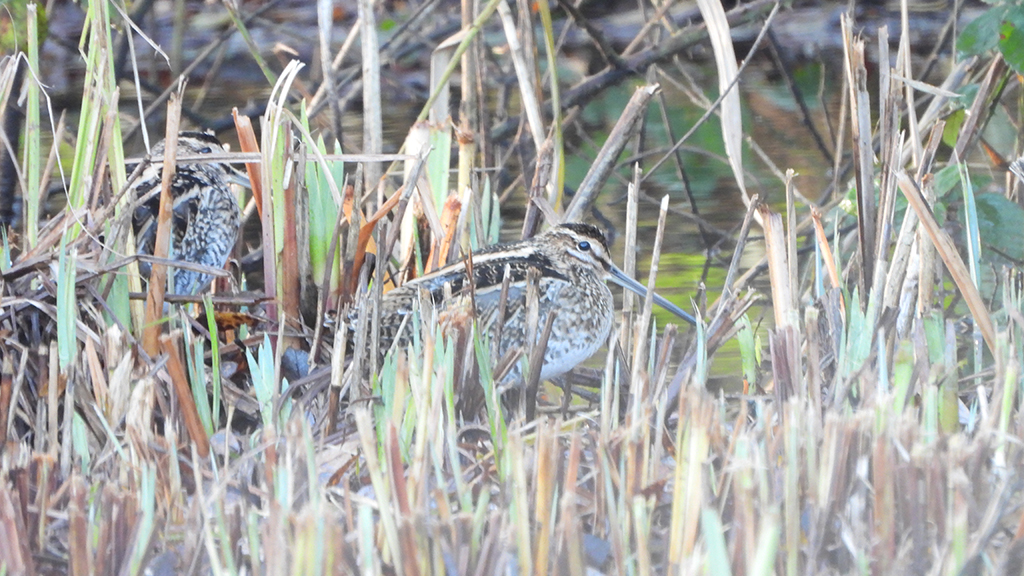Wildlife sightings for 16th June 2013
20 Mute Swan cygnets - scrape, reservoir lagoon, sheltered lagoon, main lake
3 Pochard ducklings - middle reedbed channel
1 Peregrine - flew over hospital towards Hammersmith
1 Blackcap - singing in world wetlands
Recent bird highlights: Peregrine, Red Kite, Marsh Harrier, Buzzard, Shelduck, Wood Sandpiper, Ringed Plover, Dunlin, Greenshank, Redshank, Yellow Wagtail, Black Redstart, Redstart, Spotted Flycatcher, Red-backed Shrike.
There are several broods of Lapwing and Redshank chick on the marsh, main lake and wader scrape. They are becoming increasingly hard to spot as the tall grasses and herbs grow up around them, giving them better cover from avian predators like Lesser Black-backed Gulls and Carrion Crow. Tufted Duck, Pochard, Mallard, Gadwall and Little Grebe all have nests on the lake islands and amongst the marginal vegetation. Mute Swan broods currently number 5 (with 15 juveniles).
Numbers of Sand Martins and Swifts are high, avidly feeding on increasing midge hatches on the lakes and scrape as the temperatures rise. Smaller numbers of House Martin may be counted, with Swallows being occasional visitors at this time of year (these birds prefer to breed in more rural areas).
Black-headed Gulls and Common Terns are nesting on the rafts on the main lake and reservoir lagoon.
All reedbeds and reed fringes are full of singing Reed Warbler, Sedge Warbler and a few Reed Bunting. Whitethroat, Garden Warbler, Blackcap and Chiffchaff are all breeding amongst the tree/scrub blocks and the hedges around the reserve.
Occasional Yellow Wagtail and Whinchat may be found on the marsh.
Butterflies and other invertebrates: (4th+13th June) Common Blue>Burnet Companion>Small White>Speckled Wood>Green-veined White>Small Copper. Azure/Common Blue Damselfly>Blue-tailed Damselfly>Hairy Dragonfly>Large Red Damselfly>Broad-bodied Chaser.
Reptiles: Common Lizards have been seen on log piles on the South Route and pond zone; also around the brick edges of the sluices if quiet enough. Slow Worms are present below the survey tins and sometimes basking on habitat piles. Grass Snakes may be spotted swimming across ponds in wildside.
Flowering plants: Bulbous Buttercup, Wood Avens, Beaked Hawk’s Beard, Common Solomon’s Seal, Ox-eye Daisy, Tuberous Comfrey, White Water-lily, Common Mouse-ear, Cuckooflower, Petty Spurge, Sun Spurge, Thale Cress, Wall Speedwell, Wild Turnip, Daisy, Groundsel, Hairy Bitter-Cress, Lesser Celandine, Primrose, Sweet Violet, Sweet William, Wood Anemone, Cowslip, Marsh Marigold, Wild Daffodil, Red+White Dead Nettle, Annual Meadow-Grass, Butterbur, Colt’s Foot, Chickweed, Common Field Speedwell, Lungwort, Common Whitlowgrass, Cow Parsley, Dandelion, Fritillary, Forget-me-not, Hazel, Silver Birch, Blackthorn, Alder, Aspen, Cherry Plum, Crack Willow, Goat Willow, Grey Willow, Osier, Wild Cherry, Holly, Guelder Rose, Bird Cherry.
Water Voles: best place to see one would be one of the ponds near the Pond Zone building or ‘Down the Plughole’ exhibit. Also the ponds as you enter the wildside area from world wetlands – there’s plenty of feeding activity here.



